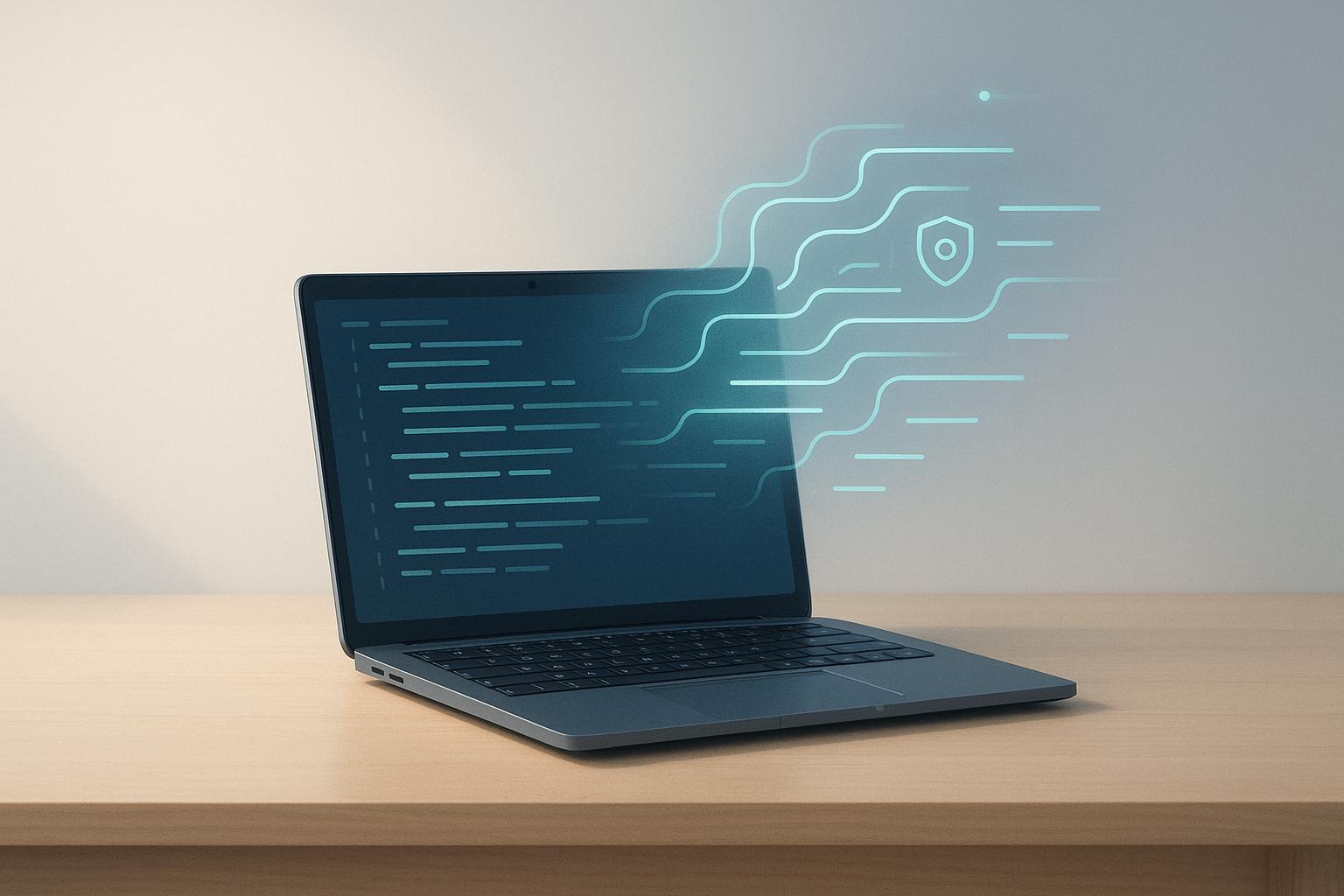AI is transforming secure coding by enabling faster, more accurate vulnerability detection and remediation. Tools like GitHub Copilot, DeepCode (Snyk), Checkmarx One, and Zee Palm's services are reshaping how developers secure applications. These tools integrate into development workflows, offering real-time feedback, reducing false positives, and addressing vulnerabilities faster than traditional methods.
Key insights:
- GitHub Copilot: Real-time secret detection but limited by false positives and a 100-password cap.
- DeepCode (Snyk): Low false positives and quick fixes but may miss some vulnerabilities in large codebases.
- Checkmarx One: Strong detection accuracy but requires complex setup and has slower scans.
- Zee Palm: Offers tailored solutions with expert oversight but needs initial configuration.
Quick Comparison
| Tool | Strengths | Limitations | Cost |
|---|---|---|---|
| GitHub Copilot | Real-time feedback, CI/CD-ready | False positives, file limitations | $49/user/month |
| DeepCode (Snyk) | Low false positives, fast fixes | Misses some issues in big projects | $25–52/developer/month |
| Checkmarx One | High accuracy, enterprise-grade | Complex setup, slower scans | Tens of thousands/year |
| Zee Palm | Tailored detection, expert input | Requires setup | Custom pricing |
AI tools aren't flawless - 45% of AI-generated code contains vulnerabilities. To stay secure, teams should combine AI tools with strong human oversight and continuous testing.
Using AI for Secure Code Creation: Enhancing Software Security - Jim Manico - CPH DevFest 2024
1. GitHub Copilot with Security Filter
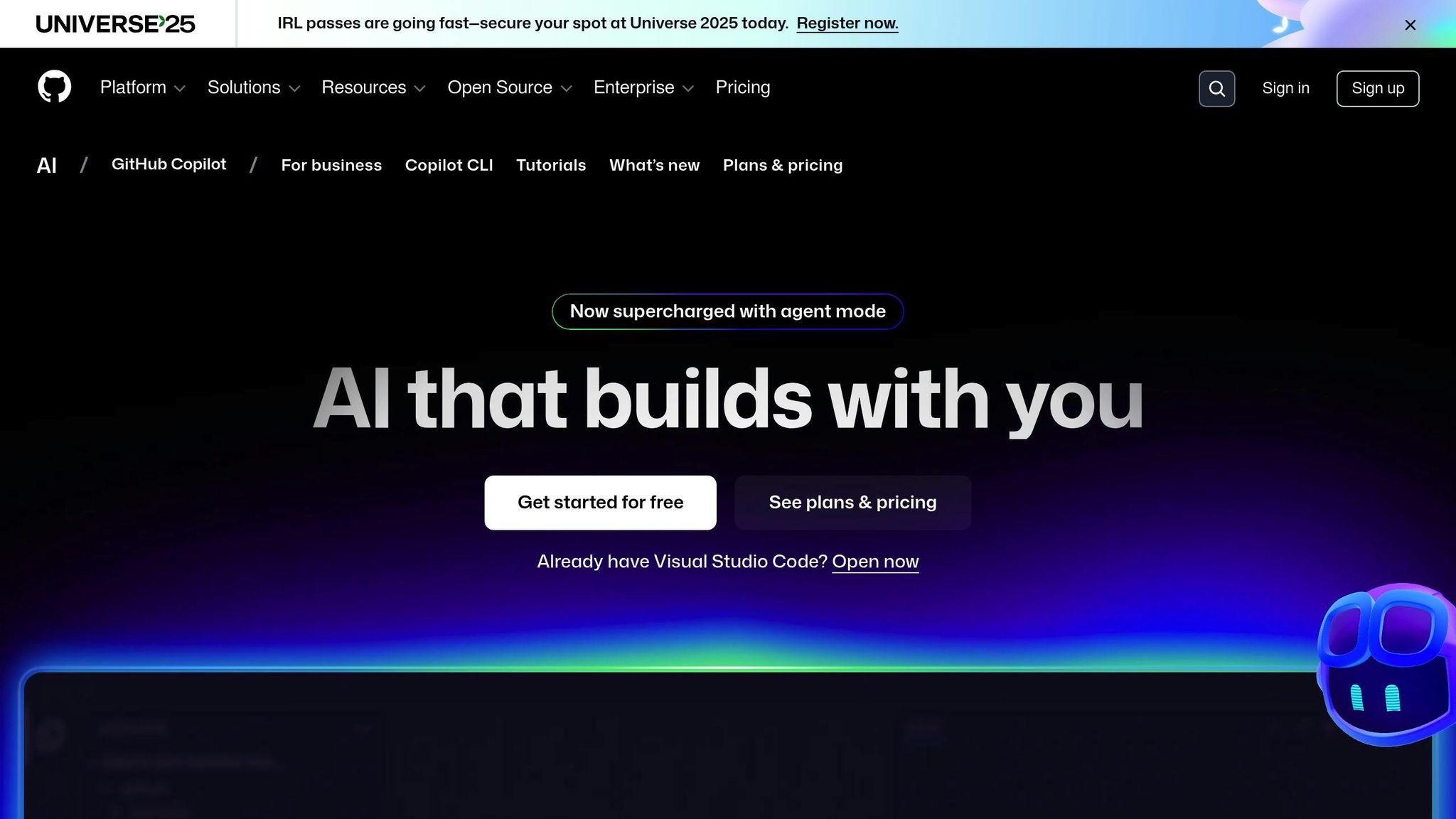
GitHub Copilot now incorporates AI-powered secret detection and Responsible AI filters to help identify security risks as you code in real time.
Its secret scanning feature goes beyond traditional regex-based methods by using large language models and contextual analysis. This allows it to detect unstructured secrets like passwords, API keys, and authentication tokens directly in the source code - even when attempts are made to obscure them. By leveraging GPT-4 for diverse test case generation, it delivers improved precision and recall. However, it does have limitations: a cap of 100 detected passwords per push ensures quick feedback but excludes secrets in certain file types like SVG, PNG, JPEG, CSV, TXT, SQL, or encrypted files. Additionally, if five or more flagged secrets in a file are marked as false positives, alerts temporarily stop to prevent alert fatigue.
Vulnerability Detection Speed
While AI-driven SOC automation has reduced false positives by 94%, Copilot's secret detection can generate more false alerts compared to GitHub's partner-pattern scanning. Responsible AI filters also occasionally block valid requests or flag benign terms like "killed" or "weapon". Developers have noted that these interruptions can disrupt workflows and reduce productivity. GitHub is actively refining its backend systems and context recognition to address these issues.
Accuracy and False Positives
Copilot integrates seamlessly into CI/CD workflows, providing immediate alerts when potential issues arise. Developers can mark false positives directly within the interface, which helps improve the model's accuracy over time. For cases where content filters block legitimate requests, rephrasing the input or adding context (e.g., "for security research") may help. Incorrect blocks can also be reported through in-product feedback, enabling GitHub to refine its filters.
Integration into CI/CD Pipelines
For large-scale enterprise projects, Copilot handles substantial code volumes effectively. However, its 100-password detection limit per push and inability to flag fake passwords, test credentials, or low-entropy items can be both a strength and a limitation. While these constraints reduce noise, they might overlook specific security concerns. Sensitivity settings are currently fixed, but GitHub is working on making the system more customizable to better suit diverse needs.
Scalability for Large Codebases
Copilot is built to manage large codebases efficiently, but its limitations - like the 100-password cap and inability to detect certain types of secrets - persist. These restrictions help reduce unnecessary alerts but may miss critical issues in some cases. GitHub is continuing to enhance the tool for better scalability and flexibility, though sensitivity settings remain static for now.
2. DeepCode (Snyk)
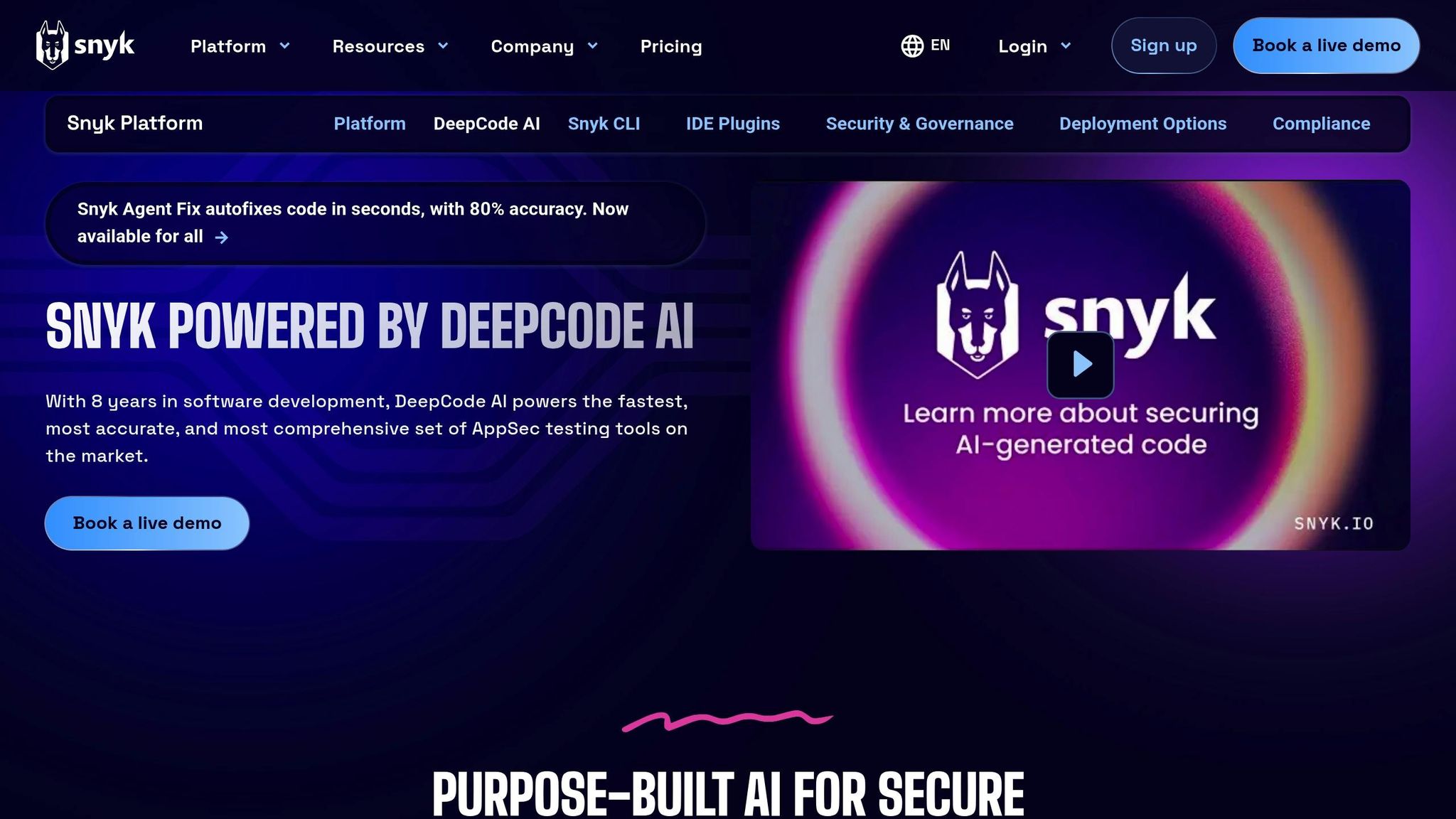
DeepCode AI, part of Snyk's toolkit, combines rule-based symbolic AI with neural and machine learning-based generative AI to pinpoint security vulnerabilities. Its SAST engine performs detailed multi-file, interfile, and dataflow analysis, refining detection rules through machine learning applied to carefully selected open-source repositories.
Accuracy and False Positives
DeepCode (Snyk) boasts an impressively low false positive rate of 0.08%. This is a significant benefit, considering how security teams often spend up to 70% of their time managing false alerts. Its SAST analysis achieves a 72% OWASP benchmark accuracy - outperforming the 53% average of other tools - demonstrating its effectiveness in identifying vulnerabilities. However, this focus on reducing noise can occasionally lead to missed issues that older, more traditional tools might catch.
"Accurate results, with reduced false positives and false negatives made possible with a proprietary, hybrid AI approach that incorporates thorough multi-file, interfile, and dataflow analysis, and combines this with extensive human expert fine-tuning throughout." - Snyk
DeepCode's Agent Fix feature adds an extra layer of validation by re-scanning suggested fixes through its symbolic AI engine. This ensures that the proposed corrections not only address the vulnerabilities but also avoid introducing new problems.
Vulnerability Detection Speed
Snyk's platform is built to identify over 3,000 vulnerabilities, including high-risk threats like XSS and SQL injections, via its API and web interface. Unlike traditional SAST tools that often overwhelm users with a flood of alerts, Snyk focuses on delivering actionable insights. Its machine learning algorithms are continuously updated and reviewed by security analysts, ensuring both speed and precision in detection.
Integration into CI/CD Pipelines
DeepCode integrates smoothly into existing development workflows and CI/CD pipelines, providing real-time feedback without disrupting the pace of development. Its hybrid AI approach, blending the accuracy of symbolic AI with the flexibility of generative AI, ensures comprehensive security analysis while maintaining a strong signal-to-noise ratio. This integration allows teams to deploy quickly without sacrificing security.
Scalability for Large Codebases
While DeepCode's strategy to reduce noise improves efficiency, it may come at the cost of missing some vulnerabilities in larger, more complex codebases. For instance, one study showed that Checkmarx identified 3.4 times more true positives than Snyk, highlighting a potential trade-off between fewer alerts and thorough detection. The evolving SAST engine continues to balance managing alert volume with delivering extensive vulnerability coverage.
3. Checkmarx One
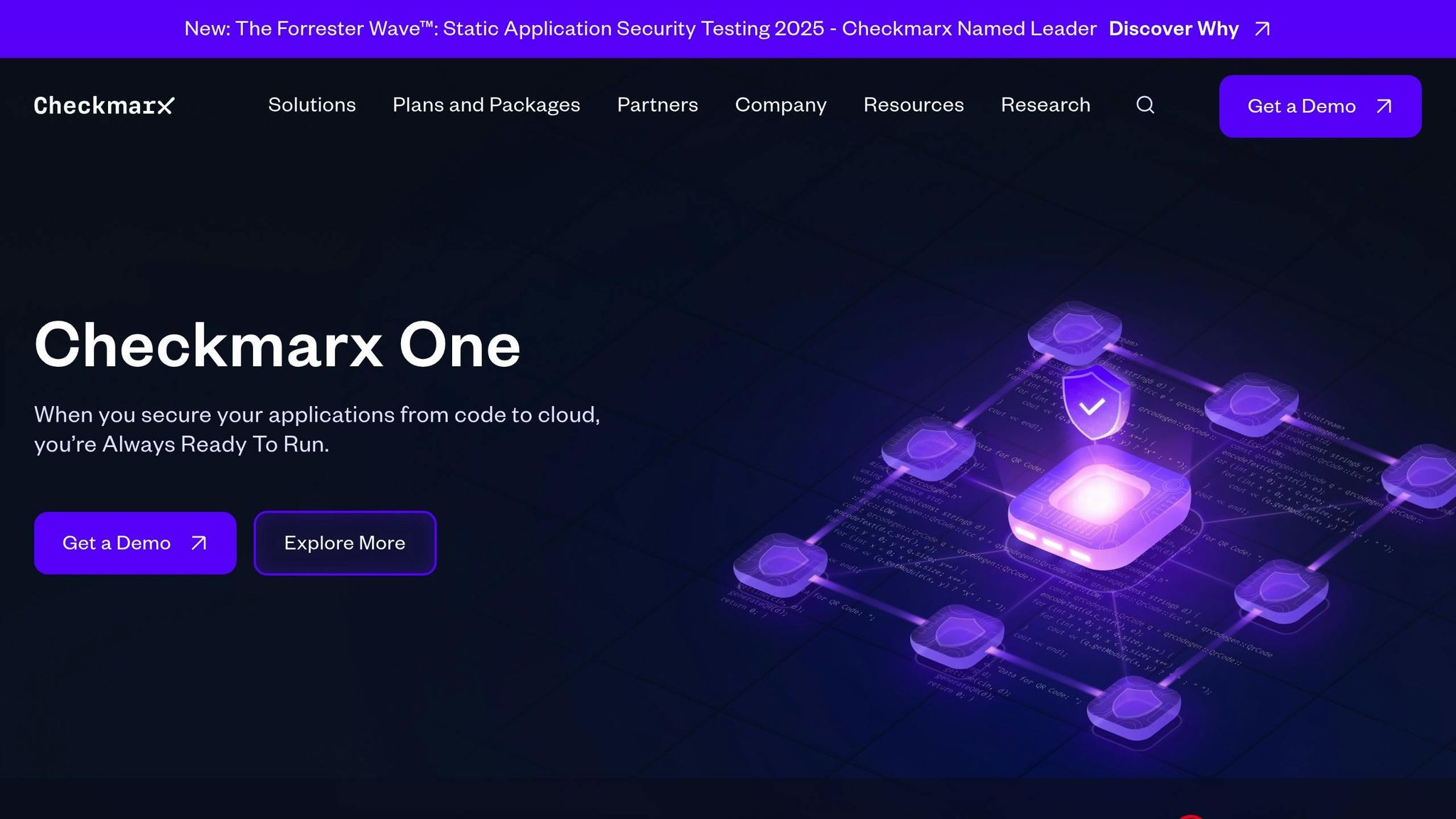
Checkmarx One uses Agentic AI to enhance code security throughout the software development life cycle (SDLC). By combining several AI-driven agents, the platform addresses security challenges at different stages, from real-time protection in integrated development environments (IDEs) to automated scanning in CI/CD pipelines.
Vulnerability Detection Speed
Checkmarx One Assist employs Agentic AI to provide real-time security across the SDLC. Its Developer Assist Agent works directly within popular IDEs like VSCode, Cursor, and Windsurf, offering instant security feedback as developers write code. This immediate feedback helps identify and fix vulnerabilities before they can escalate. Additionally, the AI Secure Coding Assistant takes a proactive approach by catching insecure code as it's written, preventing potential vulnerabilities from forming.
For broader pipeline security, the upcoming Policy Assist Agent will continuously scan and address vulnerabilities in the CI/CD pipeline. Using a "Middle Loop" process, it ensures that security signals are detected within hours or days, maintaining a steady focus on secure development.
These features ensure that vulnerability detection is both fast and seamlessly integrated into the development process.
Accuracy and False Positives
Checkmarx One stands out for its precision in detecting vulnerabilities. It reduces unnecessary alerts with 77% higher precision and identifies over twice as many true vulnerabilities compared to other platforms, achieving an impressive 0.98 recall rate. The platform also significantly lowers the risk of missing vulnerabilities, with a false negative rate of just 1.94%, compared to the 79.46% rate seen in competing solutions.
According to a 2024 Tolly Report, Checkmarx One had a false positive rate of 36.3% when tested against benchmark applications. Its AI-driven Application Security Posture Management engine further refines results by correlating findings across code, cloud, and supply chains. This prioritization ensures that only the most relevant, exploitable risks are flagged, reducing alert fatigue and focusing on genuine threats.
Integration into CI/CD Pipelines
Checkmarx One’s ability to integrate seamlessly into CI/CD pipelines ensures consistent security throughout development. For instance, in July 2025, Harness STO incorporated Checkmarx One into its pipelines, enabling automatic security scans for every code commit or build. Similarly, SAP automated SAST scans within the "Compliance" stage of its Cloud Foundry Environment pipeline in June 2025, enforcing quality thresholds as part of its Continuous Integration and Delivery workflows.
Harness STO highlighted the benefits of this integration:
"Harness STO's integration with Checkmarx One brings powerful application security testing directly into your CI/CD pipelines. It automatically scans for security vulnerabilities, delivers normalized results, enables AI‑powered remediation, and enforces policy‑driven governance – all in one streamlined workflow."
The platform supports a variety of CI/CD tools and plugins, making it adaptable to diverse development environments.
Scalability for Large Codebases
Designed to handle the demands of large-scale enterprise applications, Checkmarx One Assist offers flexible deployment options and robust APIs to support extensive software teams. This scalability is especially critical as over 70% of AI-generated code contains vulnerabilities, and 83% of enterprises deploy AI-assisted code without sufficient application security controls.
The challenges of scaling are further highlighted by the 2024 DORA Report, which found that software delivery stability drops by 7.2% for every 25% increase in AI adoption. By streamlining the process of identifying and fixing security issues, Checkmarx One significantly reduces the time teams spend on these tasks, helping them maintain both speed and security.
sbb-itb-8abf120
4. Zee Palm's AI-Driven Secure Coding Services
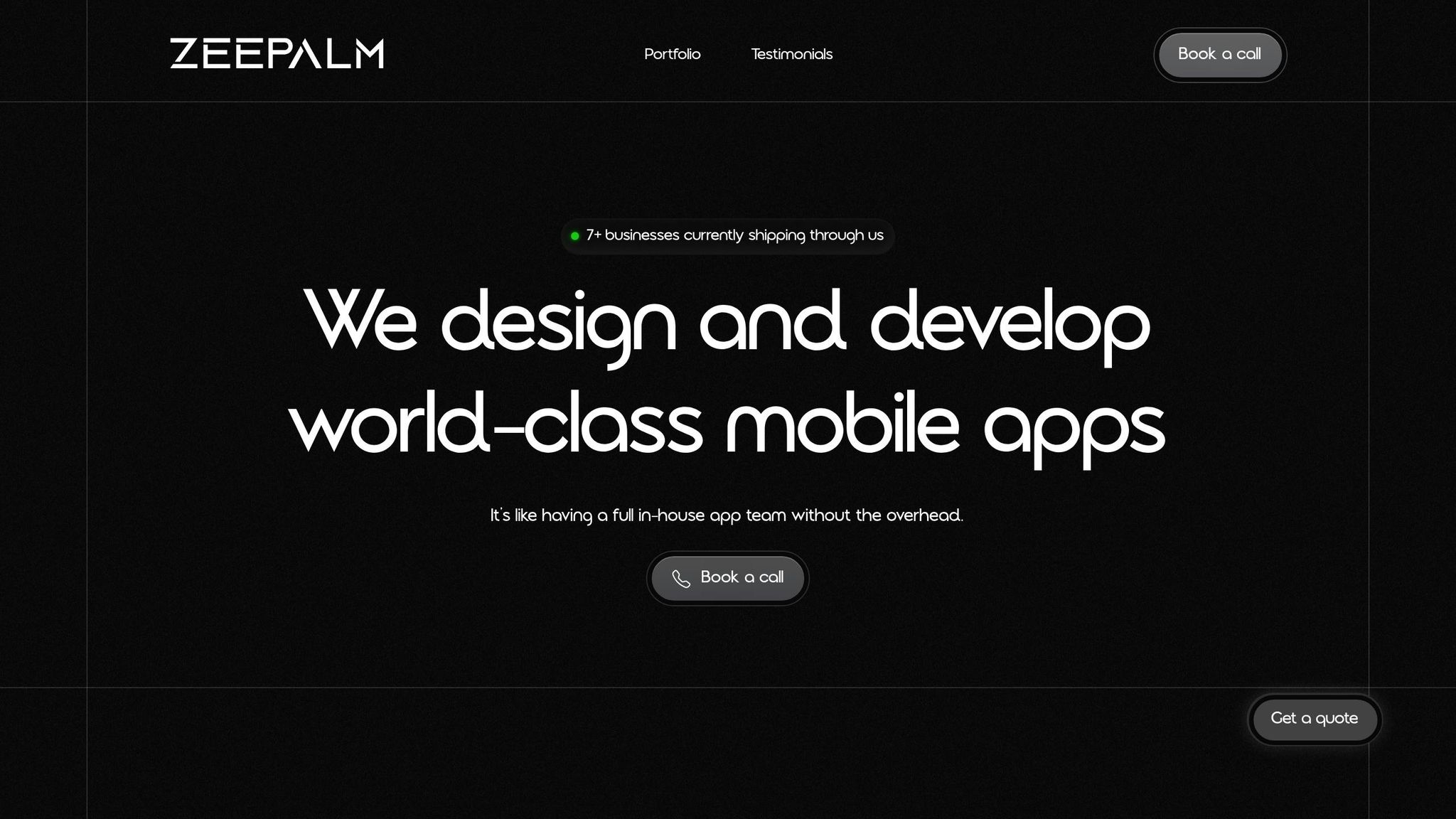
Zee Palm has taken secure coding to the next level with its AI-powered solutions, backed by over a decade of experience, a team of 13+ experts, and a portfolio of 100+ completed projects. With 70+ satisfied clients spanning industries like AI, SaaS, healthcare, EdTech, IoT, and blockchain, Zee Palm offers a proven approach to modern secure coding.
Real-Time Vulnerability Detection
Zee Palm's AI-driven platform excels at identifying vulnerabilities in real time, outperforming traditional methods. Instead of relying on periodic scans, the system continuously monitors code as it’s written and updated. This means developers receive instant alerts about potential issues, dramatically reducing the window of time vulnerabilities remain undetected. The platform processes vast amounts of code, logs, and network data nearly instantaneously, enabling teams to resolve issues within hours rather than days.
"AI scans your systems continuously and finds vulnerabilities that manual testing might miss. You can get real-time alerts when suspicious activities occur. AI will analyze attack patterns and prioritize threats based on risk scores. If you fail to patch systems, AI detects the gaps automatically. A good AI system also reduces false positives, so your security team doesn't waste time on non-issues."
– SentinelOne
What sets Zee Palm apart is its adaptive AI, which learns from new data and threats. This allows it to detect zero-day vulnerabilities and predict future risks using historical data - helping teams stay ahead of potential attacks. The combination of speed and accuracy ensures that only genuine threats are flagged, saving time and resources.
Precision and Reduced False Positives
Zee Palm’s use of machine learning, trained on extensive datasets of code and vulnerabilities, enables highly accurate threat detection. The system identifies subtle patterns and complex vulnerabilities that traditional methods or human reviewers might miss.
"AI improves accuracy by utilizing trained algorithms to vast data repositories containing code and identified vulnerabilities. AI can identify potential security issues and other subtle patterns that might easily be overlooked by human reviewers while also reducing false positive detection through continuous adaptation and learning."
– Pavan Paidy, AppSec Lead at FINRA and Purple Book Community Leader
By minimizing false positives, Zee Palm ensures that development teams can focus on resolving real security issues instead of wasting time on unnecessary alerts. This level of precision integrates seamlessly into development workflows, enhancing productivity without compromising security.
Integration with CI/CD Pipelines
Zee Palm’s secure coding solutions are designed to fit effortlessly into CI/CD pipelines, making security a natural part of the development process. The platform supports a variety of CI/CD tools and offers robust APIs, enabling automatic security scans for every code commit or build. This ensures that security checks happen without disrupting established workflows.
"You'll get faster threat detection and response, sometimes in seconds rather than days. AI can handle the analysis of massive datasets that would overwhelm human teams. There are also cost savings from automating routine security tasks. If you need 24/7 monitoring, AI never gets tired or distracted. You should also see fewer false alarms, letting your security staff focus on genuine threats."
– SentinelOne
This integration allows development teams to identify and address vulnerabilities quickly, streamlining the entire software development lifecycle.
Scalable for Enterprise Applications
Zee Palm’s AI-driven services are built to handle the demands of large-scale enterprise applications. With flexible deployment options and robust API integrations, the platform scales effortlessly alongside the size and complexity of your codebase. Whether hundreds of developers are collaborating across multiple projects or managing massive datasets, Zee Palm ensures that security remains a priority.
These capabilities align with the broader industry trend toward AI-powered secure coding, ensuring that even the most complex projects benefit from cutting-edge security practices.
Advantages and Disadvantages
When it comes to AI-driven secure coding tools, each option offers its own set of benefits and challenges, which can impact development teams in varying ways.
GitHub Copilot with Security Filter
GitHub Copilot accelerates code generation while offering Autofix capabilities for vulnerabilities across more than 25 programming languages. Teams using this tool have reported completing features 55% faster, thanks to real-time code analysis and its seamless integration with GitHub.
However, relying on public code sources can pose risks, as it may introduce vulnerabilities or backdoors into applications.
DeepCode (Snyk)
DeepCode (Snyk) provides AI-powered vulnerability detection that operates up to 2.4 times faster than traditional solutions. It also offers quick fix suggestions and automated pull requests, with strong integration into IDEs and CI/CD environments.
On the downside, its SAST (Static Application Security Testing) results can sometimes be overly broad or noisy as the engine continues to improve. Additionally, its per-developer pricing can become costly for larger teams.
Checkmarx One
Checkmarx One focuses on enterprise-grade static analysis, offering deep data flow mapping across more than 35 programming languages. Its AI-powered query builder allows teams to create custom security rules using natural language, reportedly identifying 3.4 times more true positives than Snyk.
However, the tool demands a complex enterprise setup and expertise to operate effectively. Scans for large projects can take hours, and enterprise pricing often starts in the tens of thousands of dollars per year.
Zee Palm's AI-Driven Secure Coding Services
Zee Palm takes a unique approach by combining automated vulnerability scanning with expert oversight. Their customized solutions integrate easily into existing CI/CD pipelines, addressing specific enterprise needs while maintaining scalable, real-time detection capabilities.
| Tool | Vulnerability Detection | Integration Ease | Cost Structure | Key Limitation |
|---|---|---|---|---|
| GitHub Copilot | 55% of AI-generated code is secure | Native GitHub integration | $49/user/month for Enterprise | 45% of generated code contains flaws |
| DeepCode (Snyk) | ML-powered analysis; some false positives | Excellent IDE/CI-CD integration | $25–52/developer/month | SAST engine still maturing |
| Checkmarx One | Deep static analysis; 3.4× more true positives than Snyk | Complex enterprise setup | Tens of thousands annually | Slow scans - hours for large projects |
| Zee Palm | Tailored vulnerability detection with expert insights | Seamless API & CI/CD integration | Custom enterprise pricing | Requires initial configuration |
Broader Challenges with AI-Generated Code Security
AI-generated code isn't without its flaws. Research shows that AI models struggle significantly with certain vulnerabilities. For example, they fail to generate secure code for Cross-Site Scripting 86% of the time and for Log Injection 88% of the time. Java has a particularly high security failure rate, exceeding 70%, while Python fares slightly better with a 62% security pass rate.
"45% of AI-generated code contains security flaws, turning what should be a productivity breakthrough into a potential security nightmare."
– Natalie Tischler, Veracode
AI tools also create additional burdens for development teams. A reported 68% of software engineering leaders spend extra time addressing AI-related security vulnerabilities, and 92% deal with an increase in low-quality code that requires debugging. Furthermore, approximately 20% of AI-generated code dependencies are nonexistent, leading to supply chain risks.
"The solution isn't to avoid AI tools but to use them responsibly with appropriate security controls."
– Veracode
To strike a balance, teams must combine the strengths of AI tools with robust security practices, such as automated testing in CI/CD pipelines, clear governance guidelines, and vigilant human oversight. These combined efforts are key to maintaining secure and efficient coding environments.
Conclusion
AI has reshaped secure coding, transforming it from a manual, reactive process into a proactive, automated discipline. Developers can now spot and resolve vulnerabilities in real time. For instance, one insurer reduced detection time by a staggering 92% - from 150 minutes to just 12 - thanks to AI-powered tools.
The numbers speak volumes about AI’s growing role. Currently, 67% of organizations either use or plan to use AI in development, and 72% of business leaders believe AI will boost team productivity. AI-driven remediation has also demonstrated its effectiveness, elevating fix rates from a mere 5% with manual methods to around 80% when leveraging AI.
However, this isn’t about replacing humans. Human expertise remains essential, as 40% of developers still express concerns about AI introducing new vulnerabilities. This highlights an important reality: AI works best when paired with human oversight and a commitment to continuous improvement.
"AI is not a silver bullet, the success of AI in continuous improvement depends on the quality of data that it is being fed, the quality of the model, and the expertise of the people using it." – Operational Excellence Society
This perspective underscores the importance of a balanced approach. Effective AI adoption involves embedding it into existing workflows, such as IDEs and CI/CD pipelines, while maintaining human oversight. In this hybrid model, AI takes care of tasks like vulnerability detection and initial fixes, freeing developers to focus on higher-level responsibilities like strategic planning and ensuring security measures align with business goals.
To succeed, development teams need tools that integrate smoothly with their existing tech stacks, minimize false positives, and provide strong remediation features. Equally important is investing in training to help developers validate and refine AI-generated outputs.
As the pace of software development continues to accelerate, teams that skillfully combine AI automation with human expertise will not only create more secure applications but also innovate faster. By turning security challenges into opportunities, they can transform what was once a hurdle into a competitive edge.
FAQs
How do AI tools like GitHub Copilot and DeepCode improve code security during development?
AI-powered tools like GitHub Copilot and DeepCode are transforming how developers approach code security. These tools actively identify vulnerabilities and provide real-time feedback, making it easier to address issues as code is written.
GitHub Copilot serves as a smart assistant, flagging potential security risks and offering suggestions to improve the code, helping developers catch problems before they escalate. Meanwhile, DeepCode focuses on AI-driven code reviews, uncovering flaws and providing recommendations to boost both code quality and security.
By automating these critical tasks, these tools enable developers to tackle security challenges early in the process, reducing risks and simplifying the creation of secure applications.
What are the risks of relying only on AI for secure coding, and how can developers address them?
AI can be a game-changer for secure coding, but leaning on it too much has its downsides. For instance, it might generate code with weak authentication methods or overly lenient access controls, which could open the door to security breaches. Plus, AI doesn't always grasp the nuances of specific business requirements or industry regulations, which means some vulnerabilities might slip through the cracks.
To counter these challenges, developers should combine AI with human oversight. This means thoroughly reviewing AI-generated code, validating it against security standards, and keeping a close eye on systems through continuous monitoring. By blending AI's speed with human judgment, teams can build safer and more reliable code.
How can development teams seamlessly integrate AI-powered security tools into their CI/CD pipelines to enhance security and efficiency?
Development teams can integrate AI-driven security tools into their CI/CD pipelines by embedding them early in the development process. These tools can take over tasks like vulnerability detection, compliance checks, and runtime threat monitoring, ensuring security measures are consistently applied without disrupting the pace of development.
Using AI for these tasks helps improve detection accuracy, speeds up issue resolution, and keeps security measures strong. This approach boosts productivity while enabling quicker and safer software delivery, giving teams peace of mind about their applications' security.
